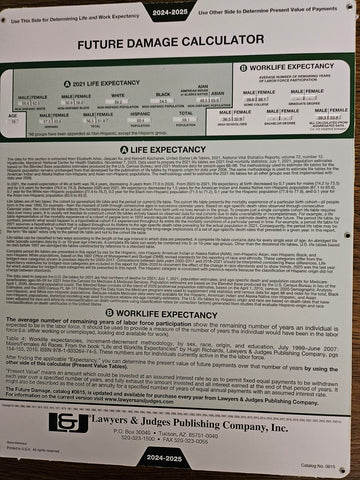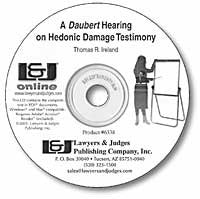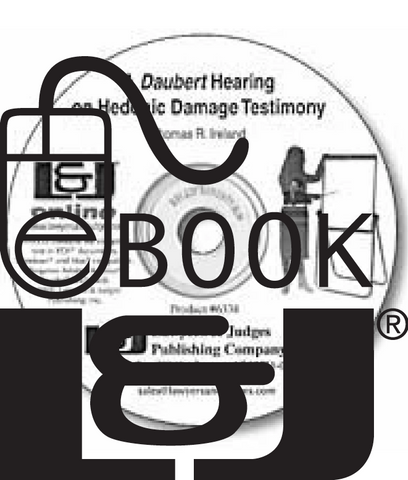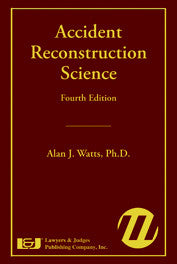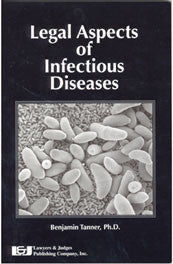
Legal Aspects of Infectious Diseases
-
Author: Benjamin Tanner
-
ISBN 10: 1-930056-92-3
-
ISBN 13: 978-1-930056-92-3
-
Copyright Date Ed: July 7, 2006
-
Pages: 203 pages
-
Binding Information: Casebound
- Size: 6 ✕ 9 Inches (US)
This new reference is an easy to follow discussion of infectious diseases and their legal implications. Background information on the most common waterborne, foodborne, airborne, body-fluid transmitted, insect-transmitted, and hospital-acquired infections is presented along with important information about antibiotic resistance, virulence factors, and toxins. The book also discusses infectious disease investigations, laboratory procedures, and the economic impact of outbreaks. Also included is a section on biological weapons, an emerging terrorist threat. This section includes information on microorganisms of concern and the potential legal and economic impacts of bioterrorism. Information on finding qualified experts for infectious disease litigation is also included.
This book is also available as an E-book. Click here to purchase and download:
Topics Include
- Microbes and Infection
- Viruses
- Bacteria
- Parasites
- Fungi
- Disease Transmission
- Virulence
- Drug Resistance
- Waterborne Diseases
- Foodborne Diseases
- Airborne Diseases
- Body-fluid Transmitted Diseases
- Insect Transmitted Diseases
- Hospital Acquired Diseases
- Biological Weapons
Table of Contents:
Chapter 1: Infectious Disease Litigation
1.1 Chapter Preview
1.2 Introduction
1.3 Claims
1.4 The Expert Witness
1.5 Chapter Summary
Chapter 2: Overview of Microbes and Infection
2.1 Chapter Preview
2.2 Introduction
2.3 A Brief History of Microbiology
2.4 Types of Microorganisms
A. Viruses
B. Bacteria <brC. Parasites
D. Fungi
2.5 Omnipresence of Microbial Life
2.6 Pathogenic versus Non-Pathogenic Microorganisms
2.7 The Immune System
2.8 Sequelae of Infectious Diseases
2.9 Routes of Disease Transmission
2.10 Economic Impact of Infectious Diseases
2.11 Chapter Summary
Chapter 3: Biology of Microorganisms: The Fundamentals for Lawyers and Judges
3.1 Chapter Preview
3.2 Introduction
3.3 Helpful Generalizations
3.4 Bacteria
3.5 Viruses
3.6 Parasites
3.7 Fungi
3.8 Viroids and Prions
3.9 Chapter Summary
Chapter 4: Virulence and Antibiotic Resistance
4.1 Chapter Preview
4.2 Introduction
4.3 Adhesion and Invasion Factors
4.4 Toxins
4.5 Gene Transfer and the DNA Plasmid
4.6 Antibiotics and Antibiotic Resistance
4.7 Antiviral Drugs
4.8 Chapter Summary
Chapter 5: The Indicator Concept
5.1 Chapter Preview
5.2 Introduction
5.3 Criteria for Indicator Microorganisms
5.4 Examples of Indicator Microorganisms
5.5 Problems with Indicator Microorganisms
5.6 Chapter Summary
Chapter 6: Infectious Disease Investigations
6.1 Chapter Preview
6.2 Introduction
6.3 False-Negative and False-Positive Results
6.4 Diagnostic Controls
6.5 Good Laboratory Practices
6.6 Growth-Dependent Diagnostic Methods
6.7 Molecular Diagnostic Methods
6.8 Immunological Diagnostic Methods
6.9 Epidemiological Investigations
6.10 Chapter Summary
Chapter 7: Waterborne Microbial Diseases
7.1 Chapter Preview
7.2 Introduction
7.3 Water Contamination
7.4 Drinking Water and Disease
7.5 Recreational Water and Disease
7.6 Wastewater Treatment
7.7 Drinking Water Treatment
7.8 Commonly Implicated Pathogens
7.9 Chapter Summary
Chapter 8: Foodborne Microbial Diseases
8.1 Chapter Preview
8.2 Introduction
8.3 Pathogens in the Food Supply
8.4 Contamination During Food Processing and Service
8.5 The HACCP System for Assuring Food Safety
8.6 Substantiation of Foodborne Disease Claims
8.7 Commonly Implicated Pathogens
8.8 Chapter Summary
Chapter 9: Airborne Microbial Diseases
9.1 Chapter Preview
9.2 Introduction
9.3 Bioaerosols
9.4 Diseases from Outdoor Air
9.5 Diseases from Indoor Air
9.6 Commonly Implicated Pathogens
9.7 Chapter Summary
Chapter 10: Body-fluid and Insect-borne Diseases
10.1 Chapter Preview
10.2 Introduction
10.3 Bloodborne Diseases
10.4 Insect-Borne Diseases
10.5 Sexually Transmitted Diseases
10.6 Commonly Implicated Pathogens
10.7 Chapter Summary
Chapter 11: Hospital-Acquired Infections
11.1 Chapter Preview
11.2 Introduction
11.3 Types of Hospital-Acquired Infections
A. Urinary Tract Infections
B. Wound Infections
C. Pneumonia
D. Gastrointestinal infections
E. Bloodstream infections
11.4 Handwashing, Disinfection, and Sterilization
11.5 Commonly Implicated Pathogens
11.6 Chapter Summary
Chapter 12: Biological Weapons
12.1 Chapter Preview
12.2 Introduction
12.3 Bacteria of Concern
12.4 Viruses of Concern
12.5 Toxins as Biological Weapons
12.6 Chapter Summary
Chapter 13: Microbial Risk Assessment
13.1 Chapter Preview
13.2 Introduction
13.3 Risk Perception
13.4 Usefulness of Microbial Risk Assessment
13.5 The Process of Microbial Risk Assessment
A. Hazard identification
B. Dose-response modeling
C. Exposure assessment
D. Risk characterization
13.6 Reliability of Microbial Risk Assessments
13.7 Chapter Summary

